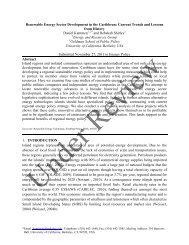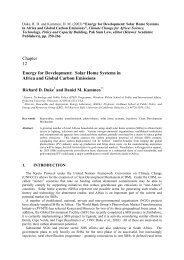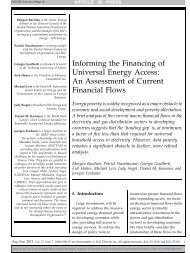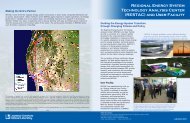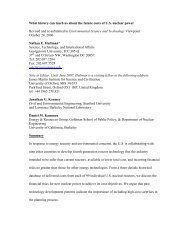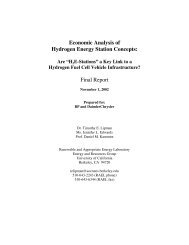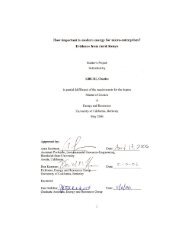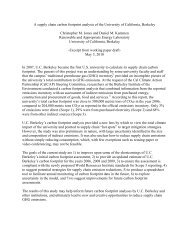Testing Small Wind Turbine Generators - Renewable and ...
Testing Small Wind Turbine Generators - Renewable and ...
Testing Small Wind Turbine Generators - Renewable and ...
- No tags were found...
You also want an ePaper? Increase the reach of your titles
YUMPU automatically turns print PDFs into web optimized ePapers that Google loves.
to ground–that is, to make sure the transistor is 100% “on”–at least 30 milliamps shouldflow to the transistor base. On the other h<strong>and</strong>, it is also necessary to limit current thatenters the base: the power transistors have a maximum base current of 1.0 amps. To fulfillthese requirements, a 22ω resistor is placed between the voltage follower <strong>and</strong> the transistorbase. When the transistor is switched on with 3.5 volts, the base current is limited to 160mA: well above the minimum 30 mA required, yet below the 1 amp maximum.2.4.4 PNP Transistor ControlThe PNP transistors require a slightly more complex circuit to operate. It is illustratedin Figure 2.13.Figure 2.14. Control circuit for each PNP transistor.PNP transistors operate in essentially the opposite way as NPN transistors. They allowcurrent to flow from the emitter (E) to the collector (C) when current flows out of the base(B) to ground. This poses a problem: how can the 0-3.5 volt output of the DSP control thesinking of current from up to 50 volts at the base of the PNP transistor? The answer is touse another transistor. The base of the main PNP transistor is connected to ground througha smaller “secondary” NPN transistor. This transistor also has a voltage rating of 60 volts,but a current rating of only 1 amp. It is controlled by the DSP the same way the mainNPN transistors are controlled: through a pull-down resistor, voltage follower, <strong>and</strong> currentlimitingresistor. When this secondary NPN transistor is turned on, it allows current toflow out the base of the main PNP transistor, through another current-limiting resistor,20




